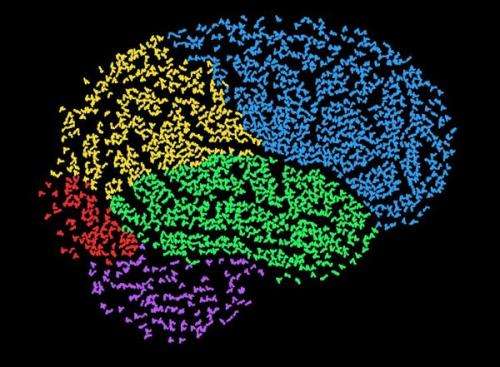Computer supports interpretation of EEGs

An estimated forty to fifty thousand EEG registrations are made each year in the Netherlands alone. Visually analysing and interpreting all this data costs neurologists and clinical neurophysiologists a great deal of time and expertise, and PhD candidate Shaun Lodder of the University of Twente examined whether a computer could replace them in performing these tasks. Lodder's conclusion: "Although a computer cannot completely replace neurologists, it is certainly very helpful in assisting them." Lodder is affiliated with the MIRA research institute and will defend his PhD thesis on 31 January.
A large part of Lodder's PhD thesis focuses on analysing EEG data obtained from patients suspected of having epilepsy. Together with prof. dr. ir. Michel van Putten and his team, the PhD candidate has developed a user-friendly computer application which can detect epileptiform abnormalities and reveal these to the evaluator which then does not have to visually screen the entire EEG. Lodder: "This is the first time that, in addition to finding new algorithms for diagnosing epilepsy, a practical solution has been found which is suitable for clinical use. What is so unique about this method is that the computer software improves itself based on feedback received from the neurologist. Unfortunately, however, the program does not yet match up to the experience and intuition of neurologists. EEG patterns are often so complex that sometimes even doctors do not agree on specific findings."
Neurologists use an EEG to measure a patient's brain activity. When diagnosing or classifying epilepsy in a patient, a neurologist is looking for certain abnormalities in the wave patterns of the EEG. These can be seen, for instance, in the form of a short high-amplitude peak, followed by a slow wave; this is highly indicative of epilepsy. During an outpatient procedure, a patient receives an EEG lasting 20-30 minutes. Evaluating this EEG demands a great deal of time, expertise and intuition from a neurologist.
Lodder developed a user-friendly application that has been tested and evaluated by nine neurologists and clinical neurophysiologists in the Netherlands. The main advantage of the system is that it can save a lot of time. A computer program is capable of analysing the recording within five minutes. Patients are currently screened during only 20 to 30 minutes each time, but in the future this will be possible over a much longer period (by using home registrations, for example), thus improving the diagnoses of doctors. This application serves primarily as a tool for neurologists. Lodder: "With the help of a database of more than two thousand examples of patterns obtained from test EEGs, we are able to classify wave patterns in other EEGs on the basis of similarity. The system presents abnormalities in a decreasing order of probability. The reviewer can then subsequently reject or confirm them. The software is capable of using the feedback obtained from reviewing to improve itself."
Lodder wants to carry out further research via a yet to be created spin-off company in South Africa, his country of birth, in order to improve the accuracy of the interpretation and to develop the system even further with additional EEG properties for the assessment of the EEG registrations. Lodder: "For now this application should just be seen as a tool for neurologists. There is a chance that in the future this software will be capable of fully recognizing certain patterns."














